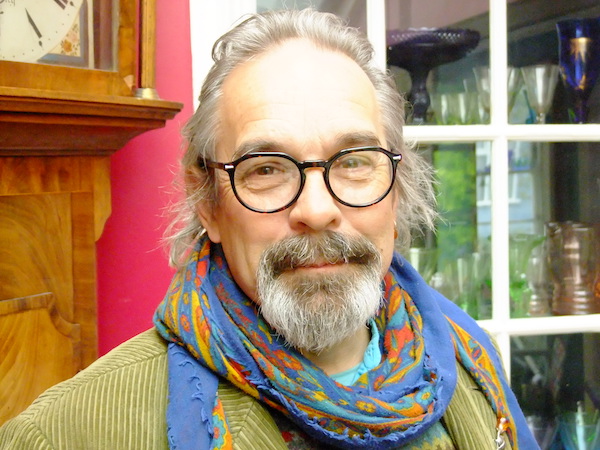Apr 2, 2024 12:59 PM
Saxophonist, Sonic Explorer Casey Benjamin Dies at 45
Casey Benjamin, the alto saxophonist, vocalist, keyboardist and producer who stamped his distinctive sounds on the…

To mark the 50th anniversary of the Apollo moon landing, Roger Eno (shown here), his brother Brian Eno and Daniel Lanois revisit and expand upon their 1983 soundtrack, Apollo: Atmosphere and Soundtracks.
(Photo: Cecily Eno)It’s one thing to commemorate an important anniversary. It’s another to revisit the past and make something new from that original footprint.
Fifty years since the July 20, 1969, Apollo 11 moon landing, the latter is exactly what composer Brian Eno, pianist Roger Eno and guitarist/producer Daniel Lanois did with their collaborative album, Apollo: Atmospheres And Soundtracks, a record which served as the sonic backbone to the 1983 Apollo 11 documentary, For All Mankind.
Set for release July 19, Apollo: Atmosphere and Soundtracks—Extended Edition was an ideal stage for musical perspective and personal reflection for all three artists, as the two-disc project marked the trio’s first time working together in more than 30 years. This latest edition of the album finds the original 12 tracks remastered and supplemented by an additional 11 cuts, all newly devised for the occasion.
For Roger Eno, the 1983 release served as his first-ever recording opportunity. And in a recent conversation he explained how the original sessions went, as well as ambient music’s place in contemporary culture.
The following has been edit for length and clarity.
What was it like for you working with Brian and Daniel again after each developing your own identities as artists?
We worked completely differently from how we did in ’83, because we worked at a distance [this time]. Danny and I sent MIDI files to Brian: Dan sent them from his studio in Los Angeles and I sent them from my studio here in Suffolk, U.K.
Essentially, we wrote three pieces each that Brian treated, and that became the second Apollo album. So, we didn’t see each other and weren’t in the same room as each other during the process, which is completely different from the original. [Back then], we were locked in together for weeks. It made things very easy to work. The drawback, of course, is that I like those two very much. You know, we get on as friends, so that aspect was missing for me. In the original Apollo recording, what you hear is a great record. But what you don’t hear or see is the enormous fun we had making it. I mean really belly-laughingly great fun. So, that kind of aspect I missed slightly, yeah.
The other thing is that, technology has changed so much that it seemed kind of proper to do it this way, because we couldn’t have done it that way in the ’80s; there was no internet. So, why not use the technology that’s now quite common?

Benjamin possessed a fluid, round sound on the alto saxophone, and he was often most recognizable by the layers of electronic effects that he put onto the instrument.
Apr 2, 2024 12:59 PM
Casey Benjamin, the alto saxophonist, vocalist, keyboardist and producer who stamped his distinctive sounds on the…

“He’s constructing intelligent musical sentences that connect seamlessly, which is the most important part of linear playing,” Charles McPherson said of alto saxophonist Sonny Red.
Feb 27, 2024 1:40 PM
“I might not have felt this way 30 to 40 years ago, but I’ve reached a point where I can hear value in what people…

Albert “Tootie” Heath (1935–2024) followed in the tradition of drummer Kenny Clarke, his idol.
Apr 5, 2024 10:28 AM
Albert “Tootie” Heath, a drummer of impeccable taste and time who was the youngest of three jazz-legend brothers…

“Both of us are quite grounded in the craft, the tradition and the harmonic sense,” Rosenwinkel said of his experience playing with Allen. “Yet I felt we shared something mystical as well.”
Mar 12, 2024 11:42 AM
“There are a few musicians you hear where, as somebody once said, the molecules in the room change. Geri was one of…

Larry Goldings’ versatility keeps him in high demand as a leader, collaborator and sideman.
Feb 21, 2024 10:45 AM
Are you having any fun? Larry Goldings certainly is. Consider just two recent examples:
Scene 1: “If anyone had…